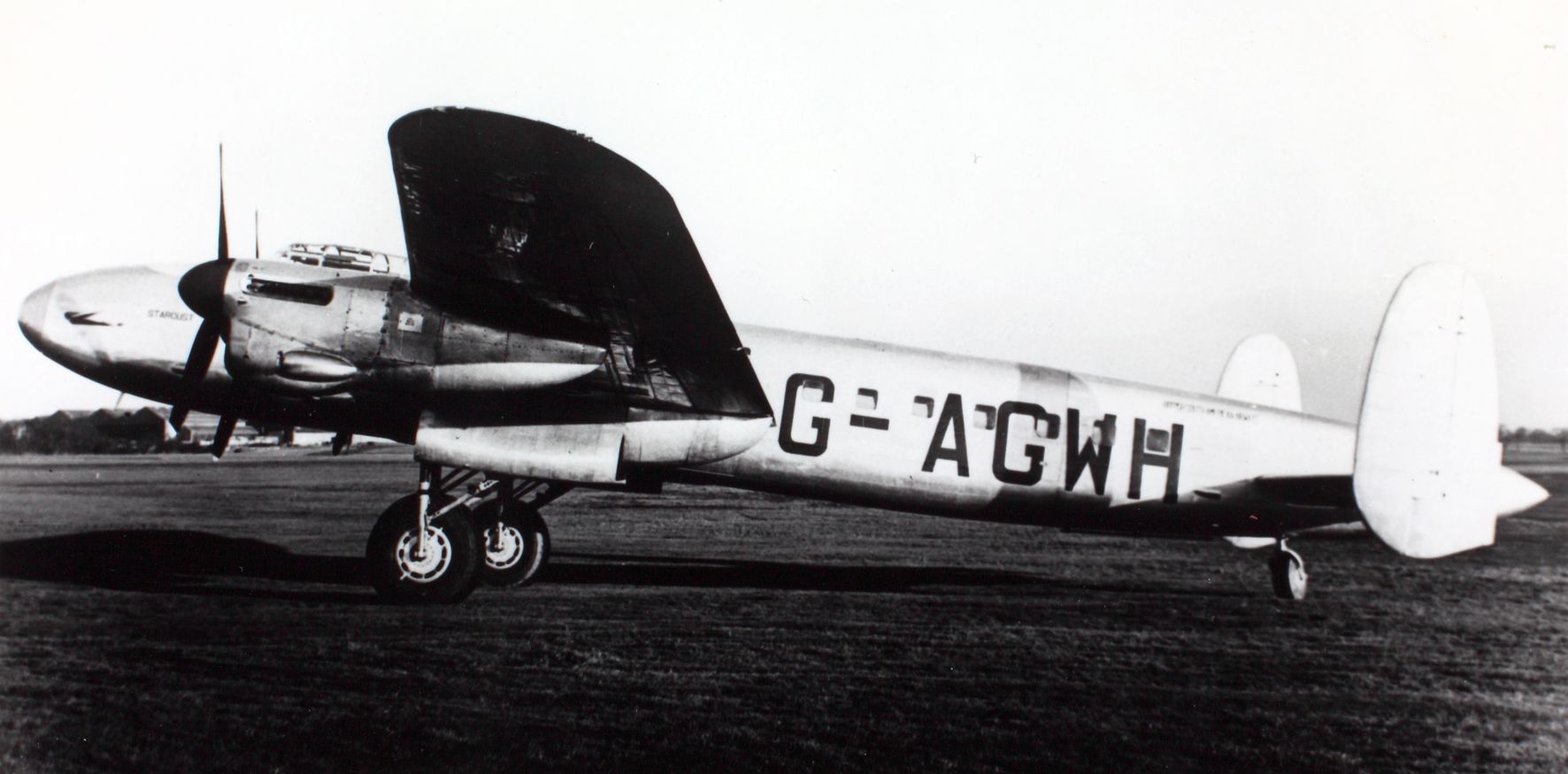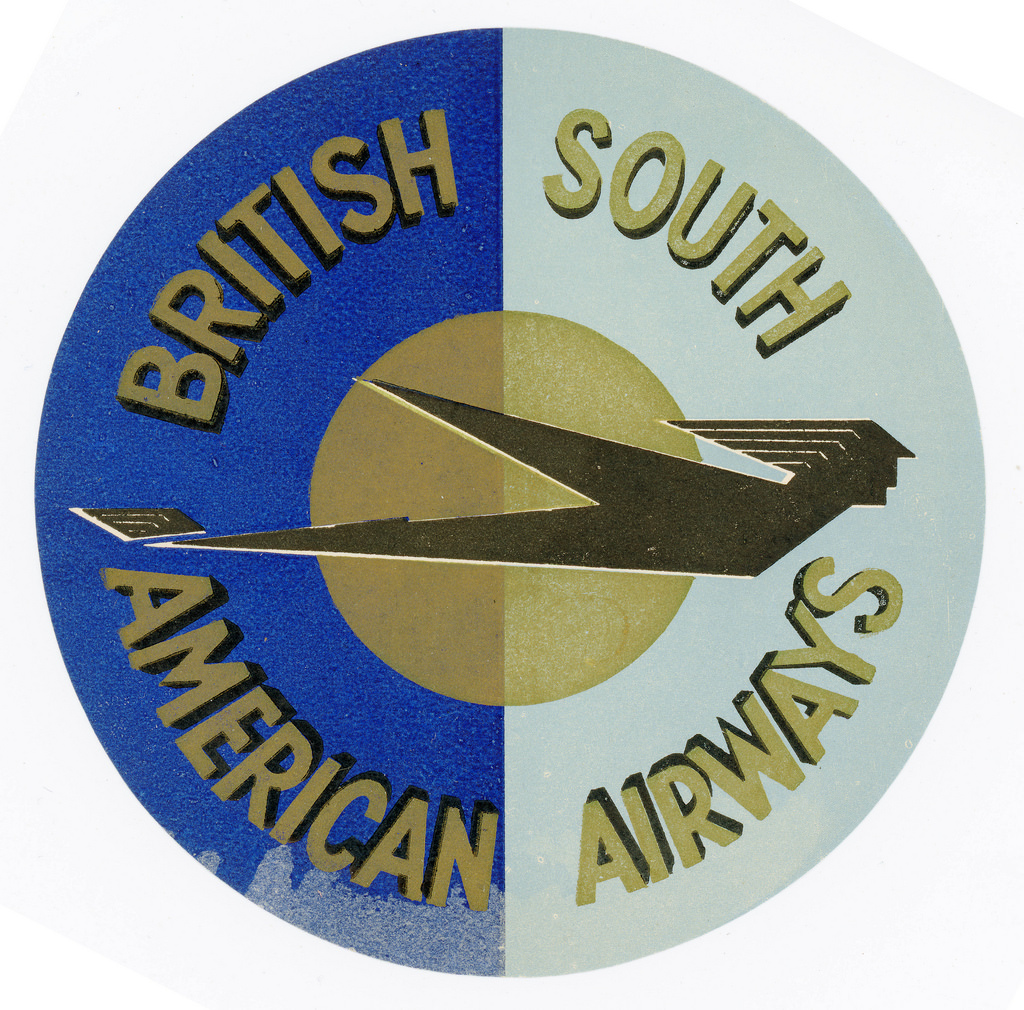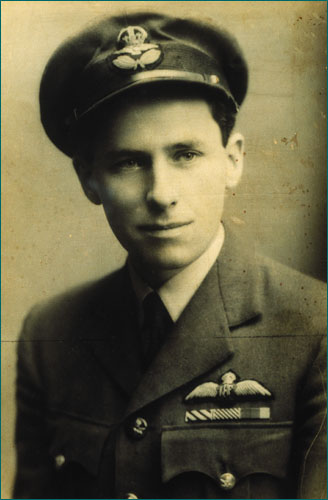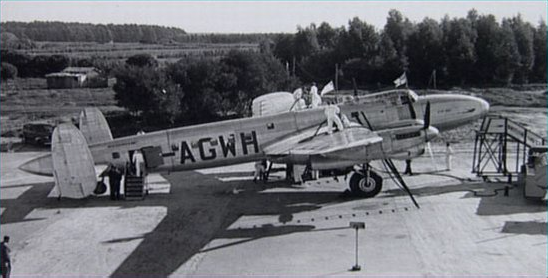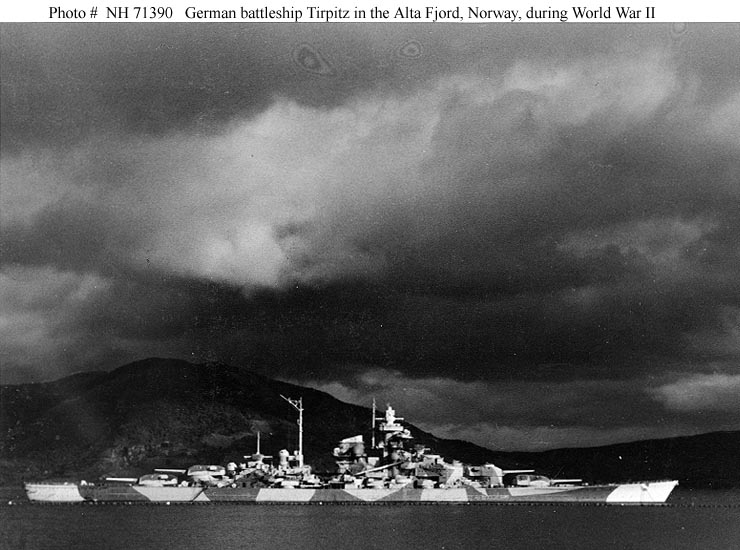
12 November 1944: No. 9 Squadron and No. 617 Squadron (Dambusters), Royal Air Force, sent a force of 32 Avro Lancaster long range heavy bombers to attack the 49,948 metric-ton-displacement Kriegsmarine battleship KMS Tirpitz at Tromsø Fjord, Norway. The attack was filmed by a photo aircraft of No. 463 Squadron, Royal Australian Air Force.
The Lancasters were armed with 12,030 pound (5,457 kilogram) Tallboy bombs. They bombed from altitudes from 12,000 to 16,000 feet (3,658–4,877 meters). Two of the bombs hit the battleship, one was a very near miss and another three also were close enough that they probably contributed to the overall damage. Many other Tallboys landed within the torpedo nets that surrounded the ship and cratered the seabed, removing the sandy bottom which had been built up under Tirpitz‘ hull to prevent her from sinking. Tirpitz immediately began to list and was then rocked by an internal explosion. It capsized and sank to the sea bed. As many as 1,204 sailors were killed.
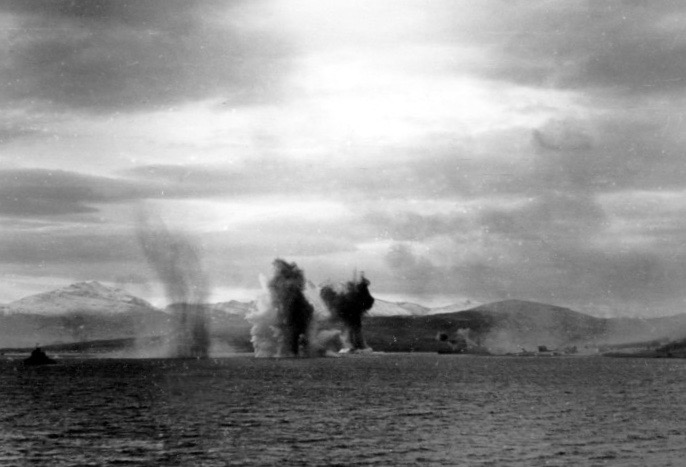
Tirpitz was a Bismarck-class battleship armed with a main battery of eight 38-centimeter (15-inch/52-caliber) guns in four turrets. These guns had a maximum range of 22.7 miles (36.5 kilometers) when firing a 1,800 pound (816 kilogram) projectile. The German Navy did not use its heavy warships to directly engage the British fleet, but instead to raid the Atlantic convoys. The merchant ships with their destroyer escorts were defenseless against a battleship or battle cruiser. Allied forces expended tremendous effort and resources to contain or destroy Tirpitz throughout the war.
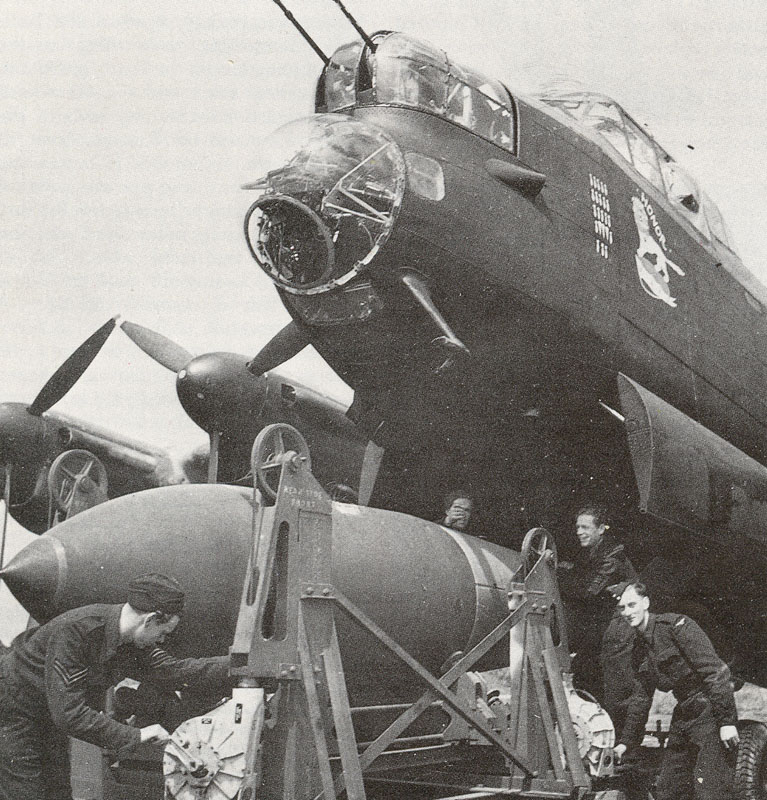
 The Avro Lancaster was a four-engine long range heavy bomber. It wasn’t as fast as the American B-17 Flying Fortress, but was capable of flying longer distances with a heavier bomb load. It was operated by a crew of seven: Pilot, flight engineer, navigator, radio operator, bomb aimer/nose gunner, top gunner and tail gunner. The “Lanc” was 69 feet, 4 inches (21.133 meters) long, with a wingspan of 102 feet (31.090 meters) and had an overall height of 20 feet, 6 inches (6.248 meters). It had a maximum takeoff weight (MTOW) of 72,000 pounds (32,657 kilograms) when carrying a 22,000 pound (9,979 kilogram) Grand Slam bomb.
The Avro Lancaster was a four-engine long range heavy bomber. It wasn’t as fast as the American B-17 Flying Fortress, but was capable of flying longer distances with a heavier bomb load. It was operated by a crew of seven: Pilot, flight engineer, navigator, radio operator, bomb aimer/nose gunner, top gunner and tail gunner. The “Lanc” was 69 feet, 4 inches (21.133 meters) long, with a wingspan of 102 feet (31.090 meters) and had an overall height of 20 feet, 6 inches (6.248 meters). It had a maximum takeoff weight (MTOW) of 72,000 pounds (32,657 kilograms) when carrying a 22,000 pound (9,979 kilogram) Grand Slam bomb.
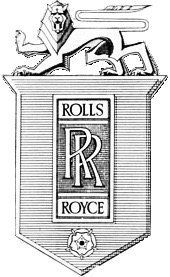 The Lancaster was powered by four liquid-cooled, supercharged, 1,648.96-cubic-inch-displacement (27.01 liter), Rolls Royce Merlin XX or Packard V-1650 single overhead camshaft (SOHC) 60° V-12 engines, which were rated at 1,480 horsepower at 3,000 r.p.m. to 6,000 feet (1,829 meters). They turned three-bladed de Havilland Hydromatic constant-speed propellers which had a diameter of 13 feet (3.962 meters) through a 0.420:1 gear reduction.
The Lancaster was powered by four liquid-cooled, supercharged, 1,648.96-cubic-inch-displacement (27.01 liter), Rolls Royce Merlin XX or Packard V-1650 single overhead camshaft (SOHC) 60° V-12 engines, which were rated at 1,480 horsepower at 3,000 r.p.m. to 6,000 feet (1,829 meters). They turned three-bladed de Havilland Hydromatic constant-speed propellers which had a diameter of 13 feet (3.962 meters) through a 0.420:1 gear reduction.
These Merlin engines, the same as those powering Supermarine Spitfire, Hawker Hurricane and North American P-51 Mustang fighters, gave the Lancaster a maximum speed of 282 miles per hour (456 kilometers per hour) at 13,000 feet (3,962 meters) at a weight of 63,000 pounds (28,576 kilometers per hour). The service ceiling was 21,400 feet (6,523 meters) and maximum range was 2,530 miles (4,073 kilometers).
Defensive armament for a standard Lancaster consisted of eight Browning Mark II .303-caliber machine guns in three power turrets, nose, dorsal and tail. Modified bombers deleted various combinations of guns to reduce weight.
The Tallboy (Bomb, Medium Capacity, 12,000 lb) was a special demolition bomb designed to be dropped from high altitude, reach supersonic speeds, then penetrate as far as 90 feet (27 meters) into the ground before detonating. It was built of a specially hardened steel casing filled with 5,200 pounds (2,358 kilograms) of Torpex explosive. The bomb was designed by Barnes Wallis, who had also designed the special bomb used by the Dambusters in their famous 1943 attack on the Ruhr Valley hydroelectric dams, as well as the Grand Slam, a 22,000-pound (10,000 kilogram) scaled-up version of the Tallboy. The Tallboy and Grand Slam bombs were very successfully used against U-boat pens and heavily fortified underground rocket facilities.
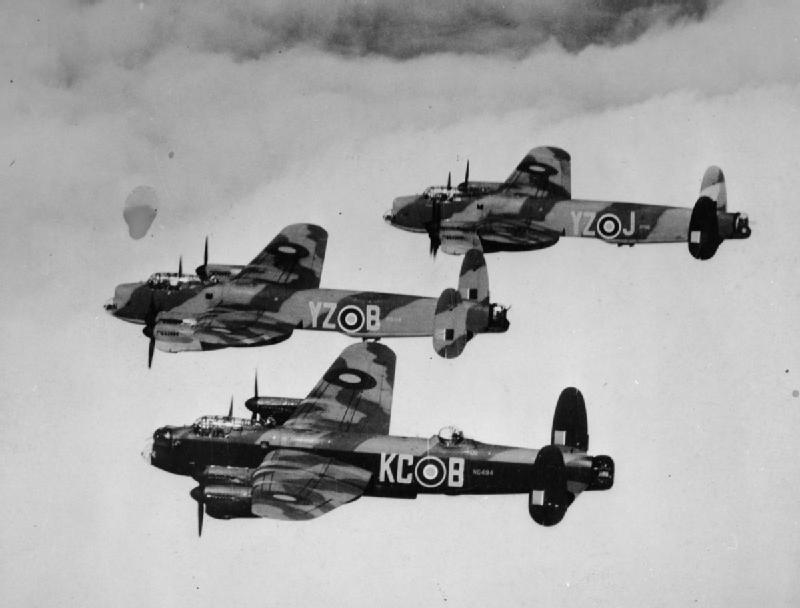
© 2016, Bryan R. Swopes
